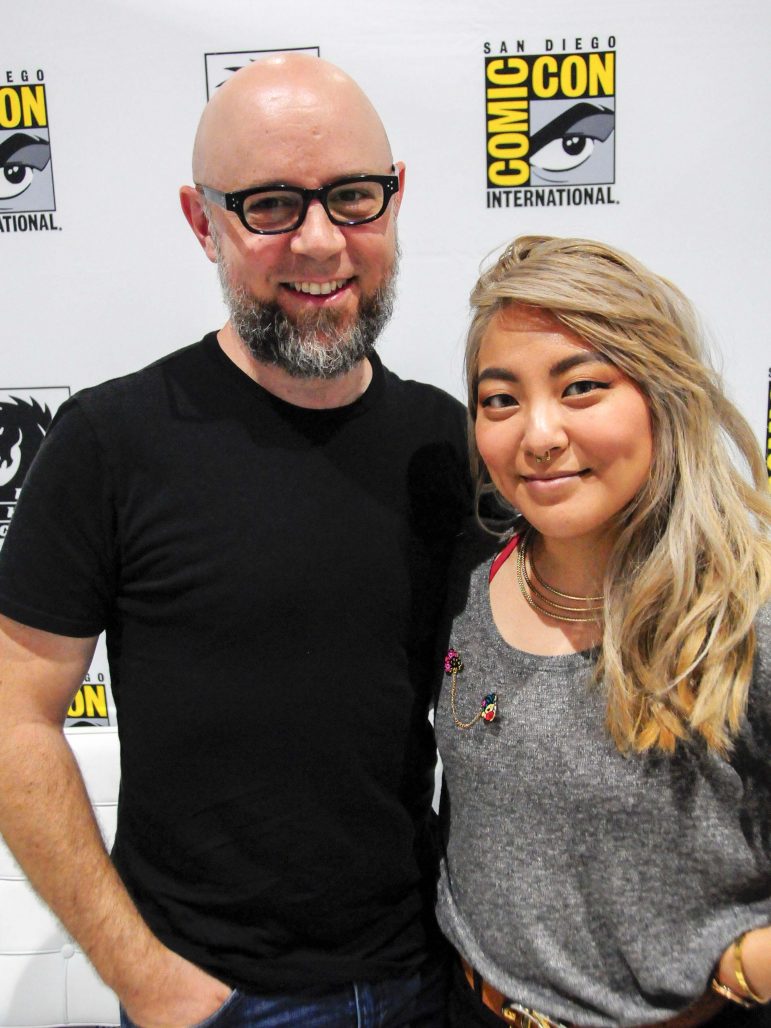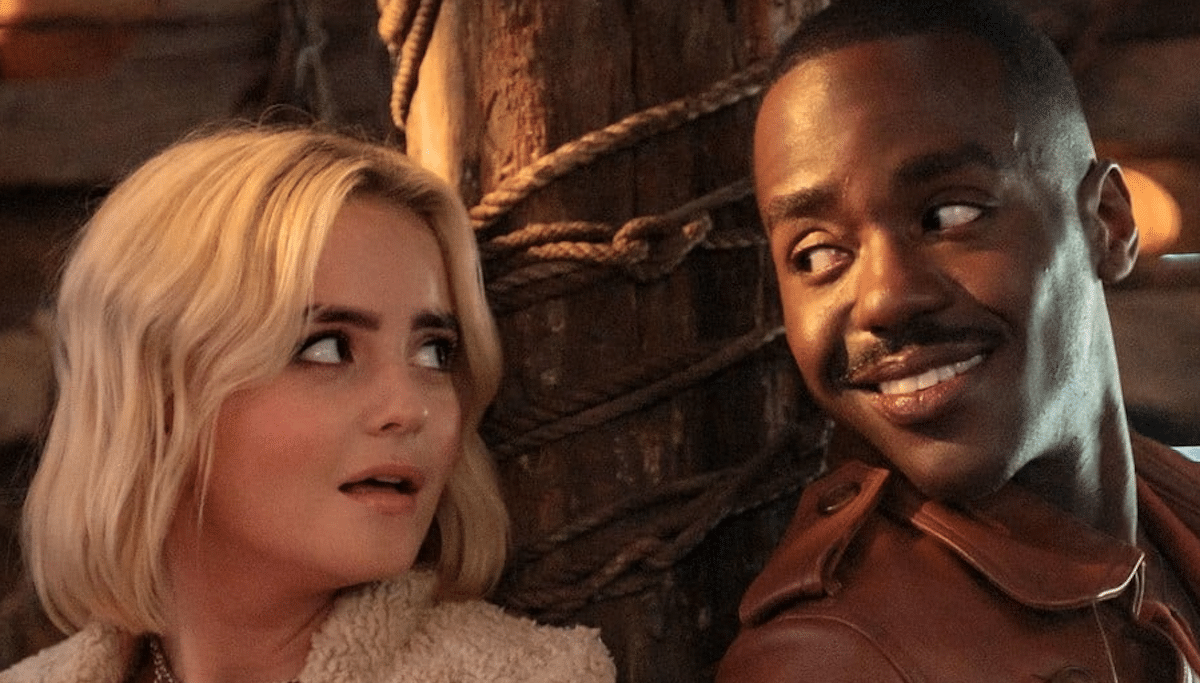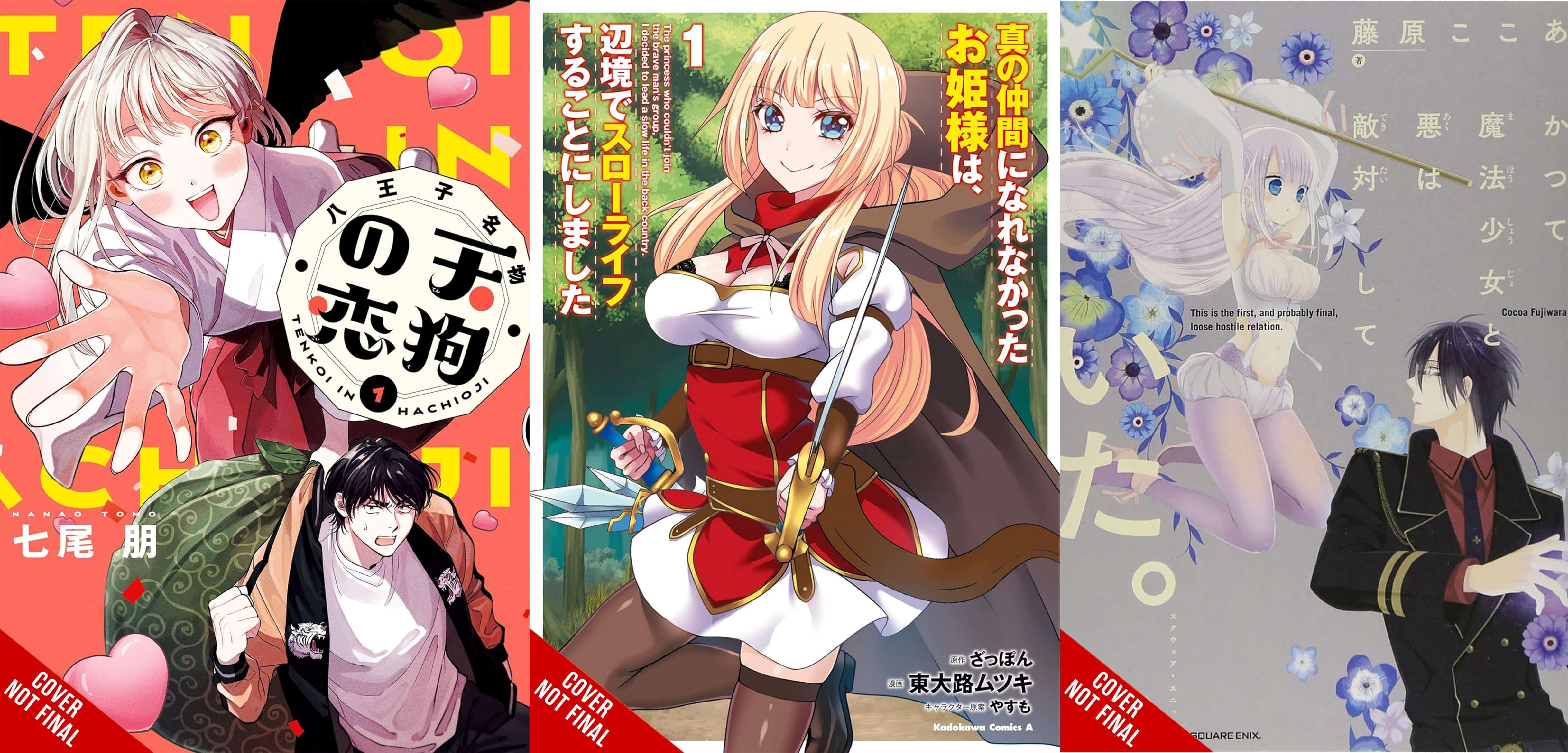
On August the 8th, the first book in the Legend of Korra: Turf Wars graphic novel trilogy, published by Dark Horse, will be released. First announced two years ago, a lot of hype has since surrounded the comic. Series co-creator Michael DiMartino has been busy with writing the story, with Irene Koh working alongside as the artist. At this year’s San Diego Comic-Con, I got to sit down with Michael and Irene at the Dark Horse booth and ask about their work.
So, Michael, how does the “Legend of Korra” comic relate to the show.
Michael: It’s a direct continuation of the show, starting two-seconds after. Like, they went into the spirit portal at the end of the series and they come out into the spirit world at the beginning of this comic.
What were your experiences working on the “Avatar” comics before?
Michael: [The comic] just kind of developed afterward. The series had been over for a while, and Brian and I are always happy that aseries is over, and fine, it can exist on its own and we don’t need to continue it. But the opportunity came up to continue with Dark Horse and Gene Yang came out to write it. He had a lot of great ideas on how to continue it. It’s nice to work with other writers and artists, because they can infuse some new life after you get burnt out as the creator on the project. Eventually you’re like, “I don’t know what else to do with these characters.” Whereas new writers can get some fresh ideas.
Irene, how would you describe your connection to these characters?
Irene: I think I’ve been a fan since day one… When someone told me to watch Avatar, that was like it. Particularly for Korra, as a bisexual, Asian creator, when that happened… it was very-super validating to see yourself in media. She’s very near and dear to my heart.
How did it come about that you would be working Korra?
Irene: I had been kind of shouting into the void that is Twitter for like years, saying things like, “Hey, if you guys do a Korra comic, I’d be perfect!” It was kind of a joke, of course. But a friend of mine got offered the gig first, but she couldn’t do it so she suggested my name to them, and it actually happened.
Michael: But I’d seen your work from the stuff you did for Leigh.
Irene: Oh, that’s right.
Michael: So, Leigh Bardugo, YA author, [Irene] had done some illustrations for her. I knew her work from that; from Tumblr.
What ideas will you be focusing on in the comic?
Michael: I think the biggest thing is the relationship between Korra and Asami. And it being years later after the show ended, it’s weird picking up where we left off two, three-years ago now. Obviously, some things have evolved in the past few years.
That said, were their any difficulties picking up where you last were?
Michael: I mean it’s always difficult. For me, the biggest challenge was that even though Brian was consulting on the comic and I was scripting it myself, we didn’t have our writer’s room of, you know, writers, to help bat ideas around and stuff. And this was my first comic I had ever written, even though I’ve written for TV and for books now, so it was a new medium to get use to. The way of telling the story though was very familiar, so it didn’t feel like a huge leap.
Did you have any ideas going into this with what you wanted to do with the art?
Irene: I tried to get kind of very specific with the Asian representation in the background characters. It’s just been super fun. But also, moments of intimacy are my favorite things to draw. Kind of being able to ham up the scenes between Korra and Asami, and REALLY drawing their expressions out and even just some absent touching or whatever was just really-fun.
Michael: You know for me, I’m excited it’s finally out, because we were here two years ago when it got announced and I started writing the first script shortly after that. It’s felt like a really long process to get this out in the world. So, I know there’s a lot of anxious people waiting to read it. So now it’s out, and people can get it shortly, I think, in the real world.
What are your feelings now that you’re less than a month from the comics release date?
Michael: Oh, I’m super proud [of it], but I was telling Irene that it feels weird to be here without Brian, because normally we would be doing the comic conventions together. Or being here without our crew that we worked with. In some ways it’s cool because it’s a smaller project, a few creative people putting these stories out, you don’t have to deal with a network and airing times and people not knowing where to find it, and standards and practices and all that when you have a story you want to tell. So, all of that has definitely been refreshing. But then again, I miss all the so many talented artists and writers who brought their take to the characters over the years. I definitely miss having that extra input sometimes.
Did you have to change your art style to better fit he comic?
Irene: That was actually one of the first questions I asked Dark Horse when I got offered the job, if I had to match the show’s art direction, which admittedly I am not a very consistent artist stylistically. But thankfully they were all like, “No, no,” and I was like, “Oh, great!” It’s definitely been interesting to look back on the pages since it’s been a year since I’ve worked on them and just noticing how much I’ve grown working on this project. This project has definitely kicked my butt and made me better. So, it’s been good.
Michael: That’s what most artists have said when working on the show. Some of the guys and girls that worked on the show and kind of hated me and Brian at the time when we were working on the show, now they’re like, “You guys really did something good.”
Irene: I mean part of the reason why I took the job was in part because I’m a fan, but also because of a career move, I knew you guys would push me. I was like, “Alright. I guess this is the butt-kicking I need right now.”
Michael: We tried to do it in a good way.
Irene: No, no. You guys were really-constructive. It was very good.
Without giving too many spoilers, is there anything we should look at for?
Michael: I mean the most obvious thing is Korra and Asami’s relationship developing, but there’s a cool new villain I really like. This is almost like his origin story in this comic, in volume one. We see what he becomes in this one and it evolves from there, becoming a bigger threat to both Korra and Asami. It was tough to work in all these storylines that we wanted to touch on; The aftermath of this portal and the city, and the invasion… How people have to pick up the pieces. But there’s all these different parts like the Airbenders, and all the evacuees that left the city, and what do you do when half of downtown has been destroyed… There’s a lot of new pieces in play.
Any parting words about this project?
Irene: I’m just happy to be part of this and being able to make queer content, just because as a queer person I know there’s just not enough of that. Like, we’ll take whatever we can get, you know. But for it to be existent in Korra as an IP, what an honor. It’s great. I just hope people enjoy it.
Michael: I think it’s going to connect with people the way Avatar and Korra always have. I know there’s a little more pressure now because there’s been so much anticipation for Korra and Asami being together finally, a little more attention paid to that aspect of this story, even though we are not making a romance comic but an action-adventure comic with romance in it. But obviously, that particular aspect is more focused on. But I tried to approach it in a way that we did the original Avatar, with respect and being empathetic to everyone’s different experiences and all different cultures and ways of life, and tried to infuse that into the comic and the show. And I hope people will respond to that.







